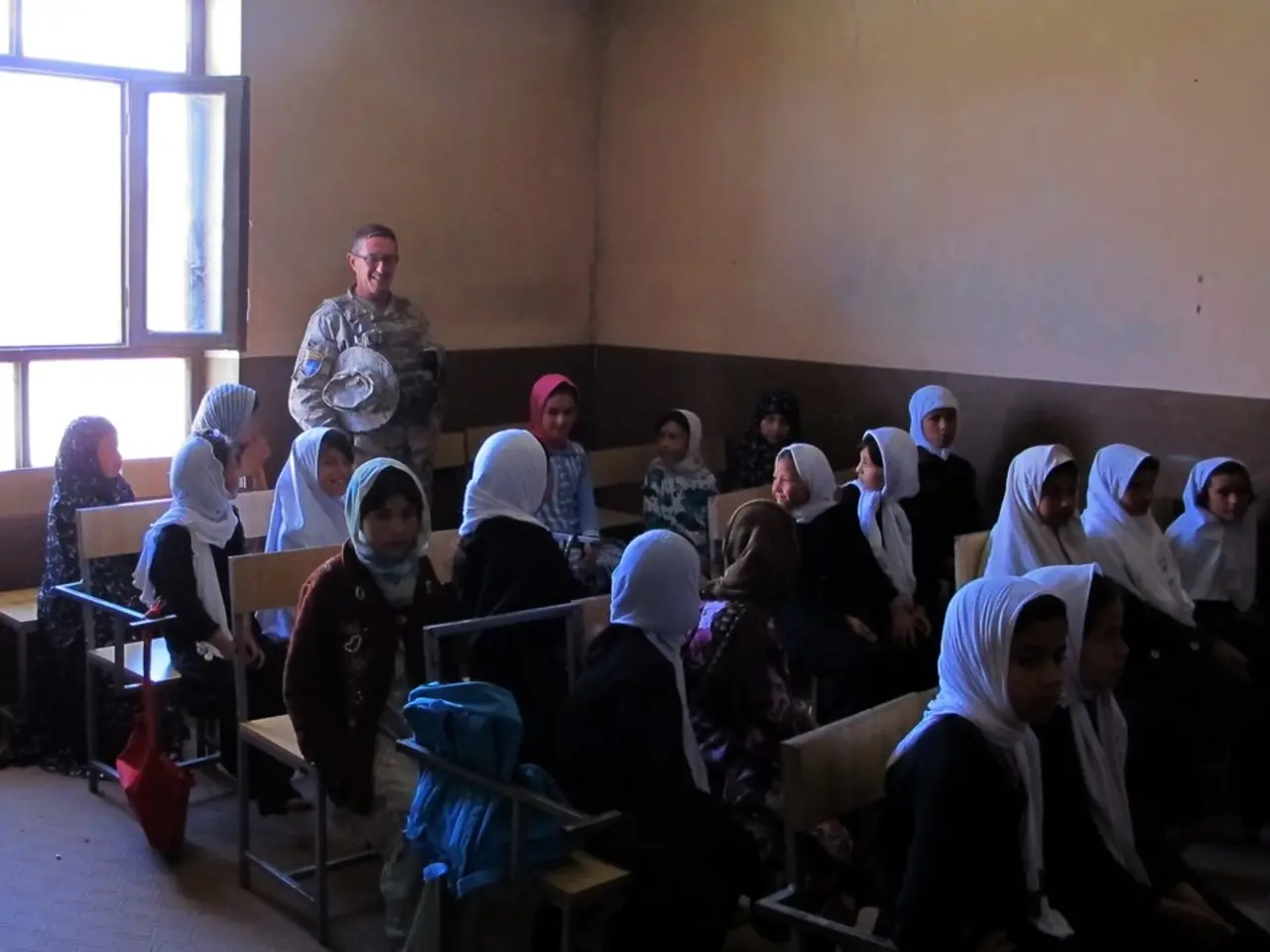Financing Strategies in Education: Detailed Examination
As societies advanced, education funding mechanisms evolved, with significant developments in the 19th and 20th centuries. Initially, education was primarily financed by local communities and religious organizations. However, as the need for a more comprehensive and equitable educational system grew, public funding mechanisms emerged.
Today, the landscape of education funding is diverse and dynamic, with various models coexisting and evolving to address disparities and enhance educational outcomes.
Public Funding
Government grants often target specific programs, such as early childhood education or technology integration in schools. Examples include Title I program and federal Pell Grants in the United States. Recent developments in innovative funding models for education globally emphasize public seed funding, blended finance, collaborative regional innovation hubs, and large-scale competitive grant programs.
The U.S. Department of Education’s Small Business Innovation Research (SBIR) program exemplifies effective public seed funding, providing early-stage capital to edtech startups. From 2012 to 2022, SBIR-backed innovations reached about 130 million learners at only $0.70 per user, yielding a ninefold return on government investment.
Private Funding
Private funding models for education encompass tuition fees, donations, and partnerships with private organizations. The Bill and Melinda Gates Foundation is an example of a significant philanthropic contributor to educational initiatives.
Innovative Funding Models
Innovative funding models, such as public-private partnerships, have emerged to address disparities and enhance educational outcomes. Social impact bonds finance educational initiatives where returns on investment are linked to successful outcomes.
Blended financing combines public and private funding, creating creative partnerships that extend the reach of limited resources. The increased use of blended financing is an emerging trend in education funding.
Regional Innovation Hubs
Emerging state and regional ecosystems are forming innovation hubs that bring together educators, researchers, technologists, and community leaders. These hubs foster collaborative learning and experimentations tailored to local needs, promoting learner-centered education models alongside dedicated R&D structures.
Competitive Grants
Competitive grants, such as Michigan’s Department of Education’s $10 million READ Innovation Grant, illustrate how targeted public funds can catalyze meaningful instructional innovations at the local level.
Crowdfunding
Crowdfunding has gained traction in education, allowing schools to raise funds directly from the community. The integration of technology in education funding is creating opportunities for innovative crowdfunding platforms.
Personalized Learning Funding
Personalized learning funding initiatives aim to provide tailored financial support for students based on their unique learning needs and aspirations.
Understanding these funding models is critical to evaluating their effectiveness in promoting educational outcomes. Variations in funding sources significantly shape educational outcomes, with adequate funding enabling schools to hire qualified staff, develop resources, and create enriched learning environments.
International organizations like UNESCO and the World Bank play crucial roles in funding education initiatives in developing nations. The evolution of funding models for education has been shaped significantly by economic, social, and political factors throughout history.
Emerging economies are increasingly exploring blended funding models, combining government resources with private investment. Landmark legislation, such as the Elementary and Secondary Education Act of 1965 in the United States, transformed funding dynamics by providing federal aid to disadvantaged schools.
However, budget constraints frequently result in insufficient support for critical programs, hindering the ability of schools to provide quality education. Funding volatility poses a critical threat, destabilizing educational environments. Oversight mechanisms may fail to address the unique needs of various educational institutions.
In summary, the future of education funding is oriented toward diverse, strategic collaborations involving public seed funding, competitive grants, blended finance models, and multi-stakeholder innovation hubs, all emphasizing scalable, equitable, and technology-driven educational solutions tailored to local and global contexts. Public funding remains critical, particularly seed funding that can be leveraged to attract private investment while promoting research-based innovations and regional collaboration.
- In the realm of innovative education funding, the United States Department of Education's Small Business Innovation Research (SBIR) program exemplifies effective public seed funding for edtech startups, reaching about 130 million learners from 2012 to 2022 with a ninefold return on investment.
- Emerging economies are adopting blended funding models, combining government resources with private investment, to address educational disparities and enhance outcomes while promoting scalable, equitable, and technology-driven solutions tailored to local and global contexts.




